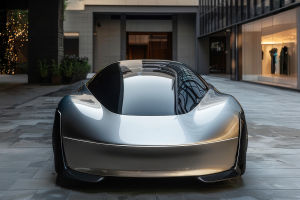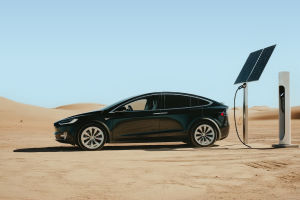Hey Lykkers! Have you ever imagined sitting back, sipping your coffee, and letting your car do all the driving? Well, that once-futuristic dream is now cruising into reality. Self-driving vehicles—also known as autonomous cars—are no longer just sci-fi ideas.
They're rolling off test tracks, hitting real streets, and slowly but surely changing the way we think about driving. So, what's really going on behind the wheel (or lack of one)? Let's break down the rise of self-driving vehicles, how they work, and what this means for our future on the road.
What Exactly Is a Self-Driving Car?
A self-driving car uses a mix of sensors, cameras, radar, GPS, and artificial intelligence (AI) to navigate the world without human input. Think of it as a computer with wheels—constantly analyzing its surroundings and making split-second decisions.
There are different levels of autonomy, from Level 0 (no automation) to Level 5 (fully autonomous, no steering wheel needed). Most cars today with driver-assist features (like lane keeping or adaptive cruise control) are around Level 2, while companies like Tesla and Cruise are aiming for Level 4 and beyond.
Who's Leading the Charge?
A few key players are dominating the self-driving race:
- Tesla is pushing ahead with its "Full Self-Driving" (FSD) beta, though it still requires driver supervision.
- Cruise (backed by GM) and Aurora are also testing driverless rides in select U.S. cities.
Traditional automakers like Ford, BMW, and Mercedes-Benz are investing heavily in autonomous tech.
It's not just a tech race—it's a transportation revolution in the making.
Why Are Self-Driving Cars Such a Big Deal?
Self-driving vehicles promise to change everything about how we move:
- Fewer Accidents: Human error causes over 90% of car crashes. Autonomous vehicles could drastically reduce that.
- More Accessibility: Elderly, disabled, or non-drivers could gain newfound independence.
- Better Traffic Flow: AI can optimize driving patterns, reduce congestion, and even ease fuel consumption.
- New Business Models: Think robo-taxis, delivery bots, and mobile workspaces.
It's not just about replacing drivers—it's about transforming lifestyles, cities, and even economies.
The Roadblocks Ahead
Of course, it's not all smooth sailing. Self-driving cars face major challenges:
- Safety Concerns: Autonomous systems still struggle in bad weather, construction zones, or unpredictable human behavior.
- Regulation: Laws vary across countries and even states. There's no universal rulebook—yet.
- Public Trust: Many people still feel uneasy about handing control over to a machine.
- Ethical Questions: In an unavoidable crash, how should a car choose between two bad outcomes? These are the dilemmas programmers must face.
Final Thoughts
Self-driving vehicles are no longer "coming soon"—they're already here, slowly carving out space in our world. We may still be years away from seeing Level 5 autonomy everywhere, but the shift has already begun. Whether you're a car enthusiast, a commuter, or just curious about the future, one thing's for sure: the way we drive is about to change forever.
So Lykkers, would you trust a self-driving car to get you home? Or do you prefer keeping your hands on the wheel a little longer? Let's chat about it!


